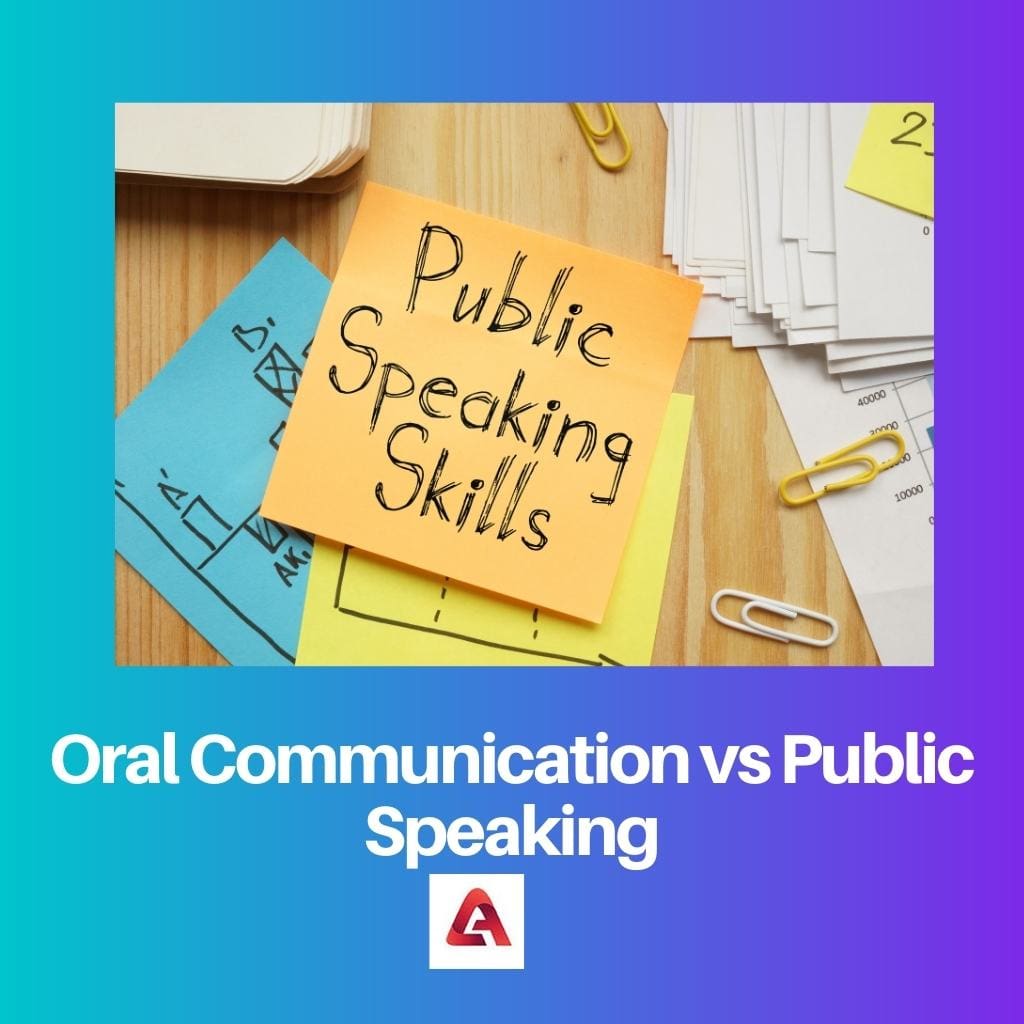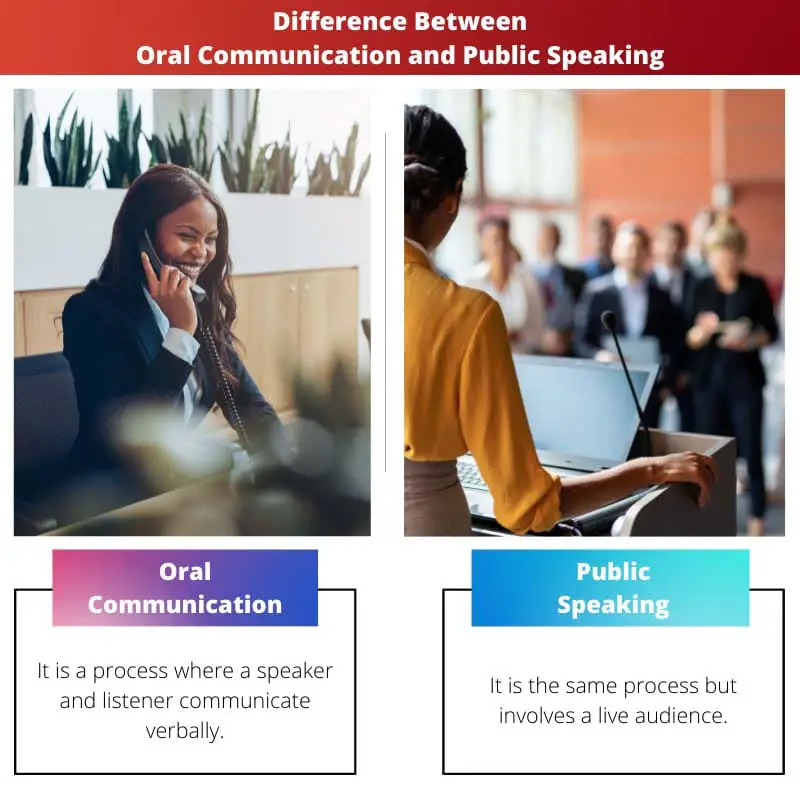Things like buying vegetables or clothes involve communication; hence, it is essential to our lives.
The Latin word “communicare”, meaning “to share”, was abbreviated, which is now used in English literature as “communicate”. It is the act of developing meaning among groups with the proper use of signs and symbols.
Amongst types of communication, one is oral communication which is further categorized, and one is public speaking.
Key Takeaways
- Oral communication is a two-way process that involves exchanging information through words, whereas public speaking is a one-way process of delivering a message to an audience.
- Oral communication can be formal or informal and take place anywhere, whereas public speaking is a formal event in front of a large audience.
- In oral communication, the speaker and listener share equal responsibility, whereas in public speaking, the speaker bears the primary responsibility for delivering the message effectively.
Oral Communication vs Public Speaking
The difference between oral communication and public speaking is that; it is called oral communication when someone shares information, ideas, and thoughts verbally. In contrast to that, public speaking is a type of verbal communication.

Oral communication is a process in which the speaker and the listener exchange or communicate verbally; in short, it gives immediate feedback.
But it is not always reliable as there is no legal evidence. The relationship here is primarily informal.
On the contrary, public speaking involves a live audience. It is a form of verbal communication that maintains a formal or informal relationship with the audience.
The talk or the speech has nothing to hide and hence is reliable.
Comparison Table
| Parameters of Comparison | Oral communication | Public speaking |
|---|---|---|
| Definition | It is a process where a speaker and listener communicate verbally. | It is the same process but involves a live audience. |
| Significance | To communicate effectively and to set a tone. | To inform and motivate people and to win over the crowd. |
| Distortion | Comparatively less possibility of distortion | High possibility of distortion. |
| Literacy | Might be illiterate. | Not required at all |
| Tone | Generally formal. | Generally informal. |
What is Oral Communication?
Oral communication is a way of communicating verbally.
To share ideas, thoughts, and information, spoken words are used. Individuals conversing one-on-one, directly or over the telephone, is an example of oral communication.
It helps define reality, organise ideas and experiences, and share them and shapes our attitude towards the world. Oral communication is used in meetings or gatherings where a verbal explanation is necessary, even when direct relation is mandatory.
It gives immediate feedback developing a relationship between the orator and the listener.
In most professional meetings, oral communication is recommended as it increases the level of understanding, transparency, and trust.
There are five types of oral communication in-
- Elevator pitch
- Formal conversations
- Informal conversations
- Business presentations
- Speeches
Oral communication is time-saving as it allows an individual to convey thoughts and ideas directly.
It is a secure form of communication for discussing critical and confidential topics, as there is a low risk of misunderstandings. One of the essential advantages of oral communication is that it helps resolve conflicts.

What is Public Speaking?
Public speaking, termed oration, is a way of communicating verbally to a live audience.
It is a type of oral communication initially developed in Rome and Greece. The then prominent thinkers from these lands have contributed significantly to the development and evolution of public speaking.
The objectives of public speaking are diverse; the primary objective is to motivate, inform and educate the audience.
The secondary objective is to entertain.
The art of public speaking was termed ‘rhetoric’ by the Greeks, and Aristotle defined it as ‘the faculty of discovering, in any case, using the available means of persuasion.
Public speaking plays a crucial role in the professional world, as approximately 70% of jobs involve some or the other form of public speaking.
Good public speaking skills create opportunities and augment personal and social life quality.
Saying proverbs is essential to good public speaking skills as it helps convey messages easier.
Walter J. Ong studied and identified distinctive ways of primary oral culture- expressions are coordinated, aggregative, and agonistically toned rather than subordinate, analytic, and cooperative.

Main Differences Between Oral Communication and Public Speaking
- Oral communication can be carried out with or without a live audience.
- In other words, it can be telephonic too. On the other hand, the central aspect of public speaking is the involvement of a live audience.
- Oral communication is professional and is preferred by professionals to set a tone and communicate efficiently, while public speaking aims to inform, motivate and convince people.
- Public speaking has a higher rate of distortion, i.e. a speaker may bluff to convince the audience without letting them have any proof against him.
- On the contrary, professional oral communication has a lower rate of distortion.
- Oral communication, in general, has no necessity of literacy; it may be illiterate, but there is no literacy barrier regarding public speaking.
- Public speaking involves a large or small live audience that needs interaction. It has an informal tone, while oral communication is primarily formal; it can be informal too.



